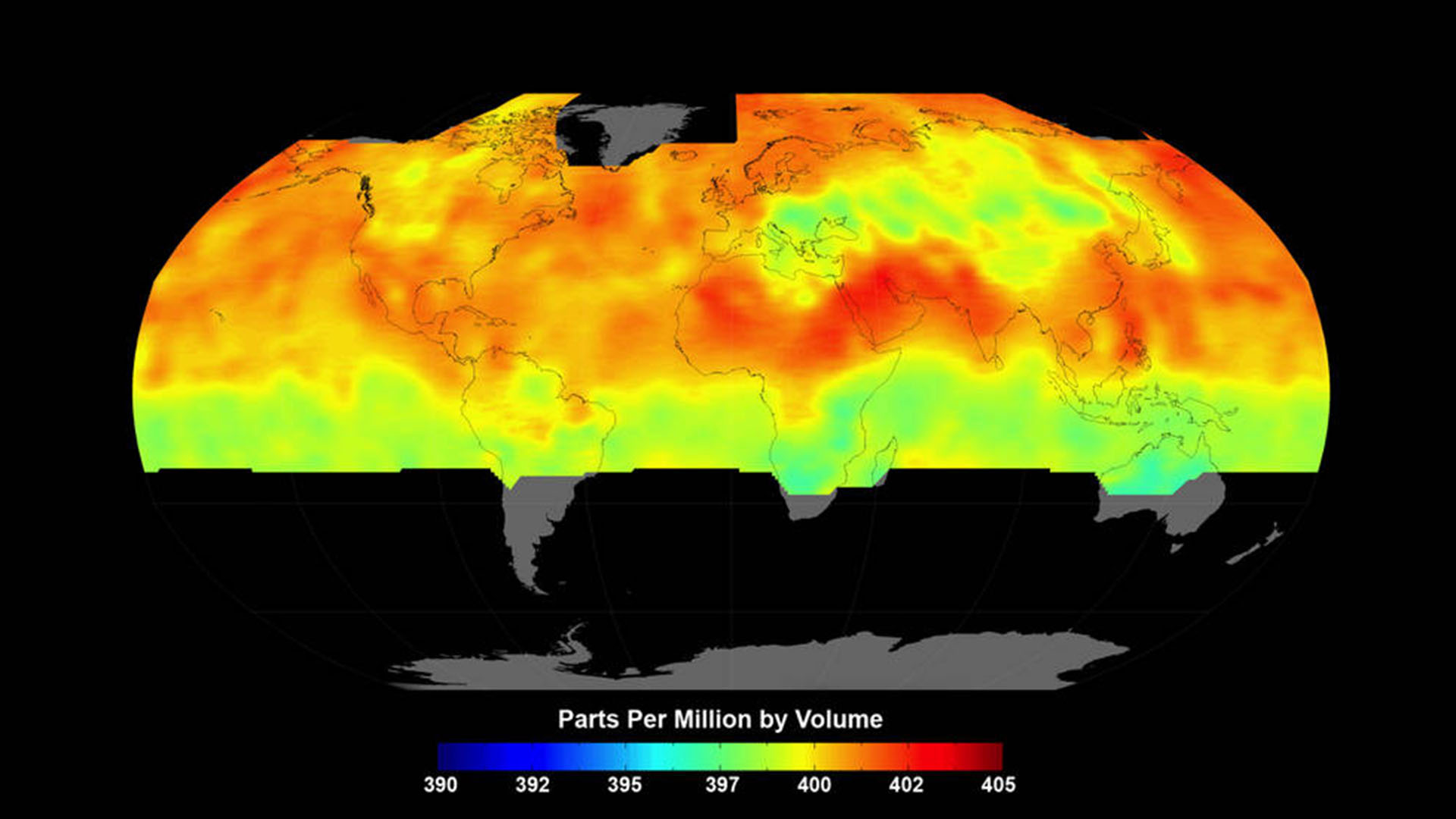 Global average carbon dioxide concentrations as seen by NASA’s Orbiting Carbon Observatory-2 mission, June 1-15, 2015.
Global average carbon dioxide concentrations as seen by NASA’s Orbiting Carbon Observatory-2 mission, June 1-15, 2015.
The years 2015 and 2016 saw record levels of excess carbon dioxide in the atmosphere, even though human carbon emissions have stabilized in recent years. Now, scientists think they know why.
The highest rates of atmospheric CO2 in 2,000 years stemmed from one of the most intense El Niño events on record, according to research published in the Oct. 12 issue of Science.
The cyclical global climate event brought hot and dry conditions to tropical regions of South America, Africa and Indonesia, where stressed plants took in less CO2 or burned, releasing stored carbon.
Together, these regions released 2.5 gigatons more carbon into the atmosphere than they did in 2011, the reference year for the study. A gigaton is a billion tons.
Colorado State University's Scott Denning says a vicious cycle might await if future climates reflect similar conditions of heat and drought.
"The trouble is that the Earth may actually lose some of the carbon removal services that we get from these tropical forests, and then CO2 will increase in the atmosphere even faster."
The findings reflect 28 months of data from NASA's Orbiting Carbon Observatory-2. The satellite can observe atmospheric CO2 and photosynthesis over large geographical areas.
 The last El Nino in 2015-16 impacted the amount of carbon dioxide that Earth’s tropical regions released into the atmosphere, leading to Earth’s recent record spike in atmospheric carbon dioxide.
The last El Nino in 2015-16 impacted the amount of carbon dioxide that Earth’s tropical regions released into the atmosphere, leading to Earth’s recent record spike in atmospheric carbon dioxide.


By submitting your comments, you hereby give AZPM the right to post your comments and potentially use them in any other form of media operated by this institution.